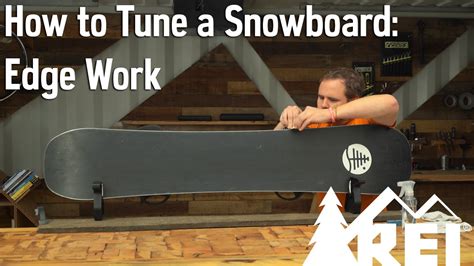Advanced Snowboard Edge Tuning Techniques: Sharper Edges, Smoother Rides
Snowboarding relies heavily on sharp, precisely tuned edges for optimal performance. While basic edge tuning is relatively straightforward, mastering advanced techniques unlocks a new level of control, speed, and precision on the slopes. This article delves into the intricacies of advanced snowboard edge tuning, equipping you with the knowledge to fine-tune your board for peak performance. We'll cover everything from understanding edge angles to advanced sharpening methods.
What is Edge Tuning, and Why is it Important?
Edge tuning involves shaping and sharpening the edges of your snowboard to optimize grip and control. A properly tuned board provides superior edge hold on various snow conditions, allowing for confident carving, aggressive turns, and smoother transitions. Neglecting edge tuning can lead to unpredictable behavior, reduced control, and a less enjoyable riding experience. The importance of sharp edges cannot be overstated; they're the foundation of precision snowboarding.
Understanding Edge Angles: Base, Side, and Effective
Before diving into advanced techniques, it's crucial to understand the different edge angles:
- Base Angle: This is the overall angle of the base of your snowboard relative to the snow. A higher base angle generally improves edge hold but can reduce glide.
- Side Angle: This refers to the angle of the side edge relative to the base. It's usually expressed in degrees and significantly impacts the aggressiveness of your turns. A sharper side angle provides more grip but can be less forgiving.
- Effective Edge Angle: This is the combined angle of the base and side angle, ultimately determining the overall edge hold.
How to Determine Your Optimal Edge Angle?
The ideal edge angle depends on your riding style and the terrain you frequent.
- Aggressive Carvers: These riders often prefer sharper side angles for maximum edge hold on groomed runs.
- Freestylers: They tend to use slightly less aggressive angles for a more forgiving and versatile ride in variable conditions.
- All-mountain riders: They might use a moderate side angle that offers a balance between grip and maneuverability.
Experimentation is key. Start with a slightly less aggressive angle and gradually increase it until you find the sweet spot for your style and snow conditions.
Advanced Snowboard Edge Tuning Techniques: Beyond the Basics
Beyond basic sharpening, several advanced techniques exist to further refine your edges:
H2: Using Different Sharpening Stones
While a standard diamond file provides a good base, using different grits of stones (e.g., coarse, medium, fine) allows for more precise control over the edge profile. A coarse stone quickly removes material, while finer stones create a razor-sharp finish. This multi-stage approach leads to a more durable and refined edge.
H2: Honing Your Edges: A Detailed Approach
Honing your edges is not just about sharpening; it's about refining the edge bevel. This involves using a file or stone at a specific angle to create a consistent edge profile along the entire length of your board. Inconsistencies can lead to uneven performance. Consider using specialized jigs or guides for accurate honing.
H2: Dealing with Edge Chips and Repairs
Edge chips are common, especially during aggressive riding. Repairing them is crucial to maintaining performance. Use a file to carefully remove any burrs and then re-sharpen the affected area using a stone.
H2: Understanding Edge Radius and its Impact
The radius of your edge curvature significantly impacts your turning capabilities. A smaller radius leads to tighter turns, while a larger radius is better for long, flowing arcs. Advanced tuners can subtly modify the edge radius using specialized tools to fine-tune turning performance.
Maintaining Your Edge Tune
Regular maintenance is crucial to preserving the sharpness of your edges. After each day on the slopes, use a file to remove any burrs or rust. Consider using edge protectors during transport to minimize damage.
People Also Ask (PAA) Sections:
H2: How often should I tune my snowboard edges?
The frequency depends on your riding intensity and snow conditions. For aggressive riders, weekly tuning might be necessary. Casual riders could potentially get away with tuning every few months. Regularly inspect your edges for any damage or dullness.
H2: What tools do I need for advanced snowboard edge tuning?
Advanced tuning requires specialized tools beyond a simple file. These include various grits of sharpening stones, a honing guide, an edge angle gauge, and potentially specialized jigs for precise edge work.
H2: Can I tune my snowboard edges myself?
Yes, but it requires practice and attention to detail. Improper tuning can damage your snowboard, so it's recommended to start with basic techniques and gradually progress to more advanced methods. Consider seeking guidance from experienced tuners initially.
H2: Are there different techniques for tuning different snowboard types?
While the basic principles remain consistent, some subtle adjustments might be needed depending on your board's shape and intended use. For example, a freestyle board might require a slightly less aggressive edge tune than a carving board.
By mastering these advanced techniques, you'll elevate your snowboarding experience to a new level. Remember that precision and patience are key; practice will refine your skills and lead to consistent, high-performance tuning.

